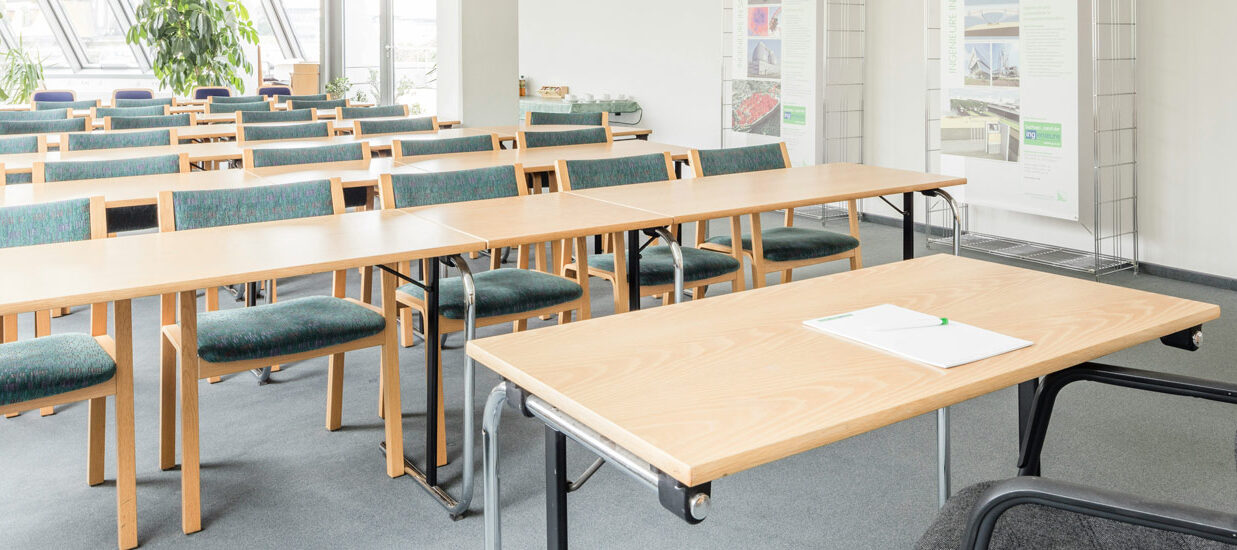Classroom Lighting Investment Returns Happier, Healthier, and More Engaged Students and Teachers
History lessons are daily activities in America’s classrooms. The recent history of lighting technology’s ability to enable energy savings and improve physical and mental well-being in educational settings is a story worth telling. Unfortunately, too many rooms in our schools remain poorly illuminated for many reasons. A study by the U.S. Government Accountability Office (GAO) in 2020 revealed that 25% of school districts indicated the need to update lighting fixtures in 50% or more of their schools.
School Lighting Upgrade Obstacles
The average age of school buildings in the United States is now nearly 50 years old. The aging of classrooms means the electrical infrastructure, fixture placements, and materials used in construction can all become challenges when schools are looking to invest in new lighting systems. Funding is also a challenge as school systems are increasingly challenged to do more while battling inflation, and all too often, funding declines.
Maybe a new perspective is needed when considering an investment in updated lighting. Introducing smart fixtures and connected devices into lighting design now allows schools to look at their lighting project as not just about illumination. Light fixtures and control devices can now be part of a facility-wide network enhancement. The Internet-of-Things (IoT) now includes controllers, sensors, and luminaires that can serve as part of an intelligent environment, enabling better learning and energy savings and security and efficiency enhancements.
Light Quality Improves the Classroom in Numerous Ways.
After more than a decade of analysis and LED technology advancement, few, if any, individuals will argue against the positive impact of good lighting in educational settings. Professionally designed and installed lighting systems improve productivity, health, and student behavior.
In 2017, a study was conducted in a Texas school where LED lighting and controls were installed in three classrooms. Allowing localized control of the light settings in the individual classroom allowed the teacher and students to control the level and type of light for different kinds of classroom activities. The teachers involved in the experiment observed that the improved lighting system positively impacted the learning environment. Properly designed classroom lighting is more than just enough brightness to see well. Effective lighting in educational settings enables an environment where students’ visual comfort, alertness, and mental function can all be optimized.
The Science Of Lighting And Student Health
Dim or flickering light, dark spots, or shadows require the eye to work harder to focus on reading or other tasks such as handling science experiment materials. This strain may lead to headaches, tiredness, mental disengagement, or behavioral issues. Inadequate or poorly designed lighting often results in slower reading or reduced concentration.
The correlation between proper lighting and superior academic performance has been well-documented in studies. Natural light or a suitable alternative improves cognitive function and has been linked to higher test scores compared to test scores associated with poorly lit classrooms.
Exposure to different types and levels of light impacts human alertness and the internal body clock, also known as the circadian rhythm, which regulates sleepiness and alertness. Sunlight reduces melatonin production, thereby preventing sleepiness. The suppression of melatonin allows students and teachers to remain awake and engaged during the school day. LED light that can mimic the blue spectrum of natural daylight is essential to maintaining energy and focus for individuals spending many hours a day in a classroom.
Proper Classroom Lighting Is More Than Just Brightness
Bright light is not always the correct answer for improving the learning environment, and all bright lights are not the same. Fluorescent light, the primary light source in schools for several decades, is notorious for generating glare that can cause eye strain and headaches. Poor placement of LED fixtures can also generate hot or dark spots, harming the classroom experience.
All bright, all the time is also not the best solution for modern classrooms. Not only do sensors and other light control devices reduce energy consumption, but they can also enable mood settings or other light color and level options to encourage student engagement.
The Impact of Different Color Temperatures in the Classroom
While general illumination is a light fixture’s primary purpose in most applications, the light’s color temperature can be tuned to enhance variable classroom activities. The color temperature of light is measured in Kelvin (K) and can range from warm (low Kelvin) to cool (high Kelvin). Different color temperatures can impact students’ capacities to concentrate, learn, focus, and, perhaps most importantly, stay awake.
Artificial light comes in three primary spectrum ranges:
Cool Light (5000K – 6500K)
Cool light mimics daylight sunlight and can be pretty energizing, warding off the creation of melatonin and keeping students and teachers alert. However, cool lighting conditions can be too intense when students (and faculty) are exposed to them for long periods. Some cool light fixtures may be better suited for task lighting, including art rooms, science labs, and testing rooms.
Neutral Light (3500K – 4100K)
Neutral light is a balanced white light, also known as neutral lighting, and is often the ideal option for learning environments. This color temperature range allows students to engage with their curriculum properly, and may alleviate headaches correlated with the intense blue-light spectrum prevalent in cool lighting that can be harsh on the eyes.
Warm Light (2700K – 3000K)
Warm light often looks yellow or orange when compared to cool or neutral light. Most incandescent light fixtures give off a yellow-orange glow. This color temperature creates a cozy and inviting atmosphere but is often too relaxing as far as classroom lighting is concerned.
EPCO Provides Scalable Classroom Lighting Solutions
The team at Energy Planners provides schools with scalable, energy-efficient lighting solutions that are customized to the unique requirements of each school building.
Partnering with EPCO enables school staff to focus more time and effort on providing quality education in a healthy environment that gets students excited about learning.

